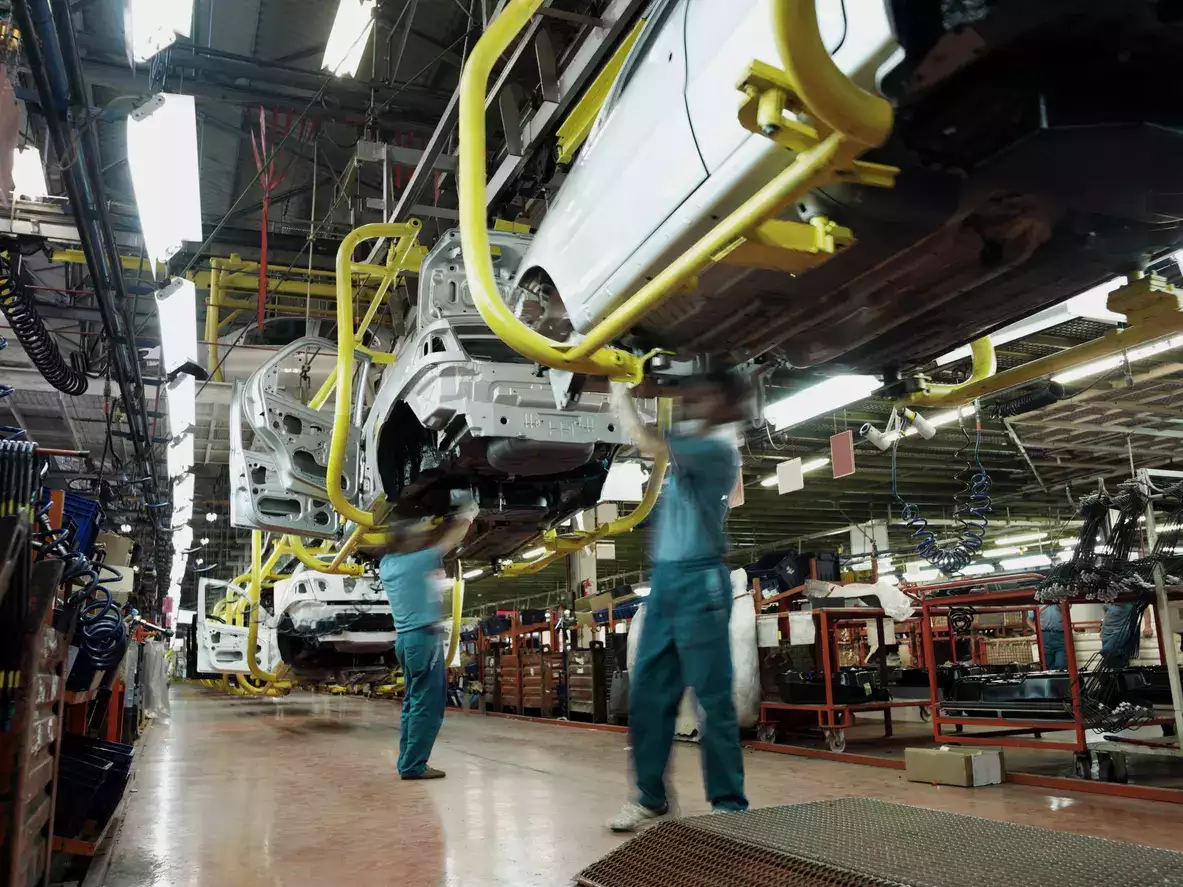
The auto industry in India has also created auto hubs to bring suppliers closer, streamline logistics, and foster collaboration in the ecosystem. So this industry (compared to others) is primed for fully implementing Just-In-Time (JIT) in the end-to-end supply chain.
However, while that may have been the objective, the reality is completely different. A survey done by Vector Consulting Group, a leading consulting company, reveals some surprising facts.
Firstly, although 75% of Indian OEMs apply JIT internally, none of them have succeeded in implementing it in their entire supply chain spanning suppliers and distribution partners. (One exception seen is of an MNC OEM which has done a zero inventory model at the dealer level, with real demand from end-consumer triggering inventory movement. Some have also done a demand-pull replenishment for only spare parts from their OEM warehouse to dealers).
Most follow a hybrid push-pull system, i.e., monthly/weekly forecast-based ordering from dealers and scheduling monthly production requirements from suppliers with daily inventory movement to OEM plants as per demand. Further, while many suppliers (Tier 1) are engaged in 'JIT partnerships' by some OEMs, there are clear signs that the inventory benefits are skewed only towards the OEMs. The study drew these conclusions after examining the inventory practices of major Indian OEMs and Tier 1/2 suppliers. Secondly, 90% of those who have JIT in their supply chains say that its implementation has been ineffective and does not yield the expected benefits.
JIT implementation ineffective
This ineffective implementation is primarily evident in the instability of their supply chains, i.e. high expediting levels. A substantial 75% of respondents note extensive firefighting to secure 1-2 days of a complete kit at OEMs and suppliers for immediate production. Frequently incomplete kit availability disrupts production plans (75% at OEMs; 70% at suppliers).
Imbalance in inventory to benefit the OEM
The lack of effectiveness of the JIT implantation is also visible in inventory profile variability across the supply chain and a noticeable imbalance in the inventory benefits favouring OEMs. Despite OEMs maintaining a mere one day or one shift of inventory, suppliers, even located just a few hours away from assembly plants, often stockpile 10-12 days' worth of inventory for the OEMs. Similarly, dealerships often hold stocks equivalent to 1-3 months of sales. Most current inventory practices are mostly in the OEM's favour as well. Notably, 90% of respondents reveal that inventory remains on the supplier's books until whenever it is inwarded by the OEM for their production but shifts to the dealership account upon factory exit. 85% of Tier 1 suppliers follow a similar approach with their suppliers in how they recognize inventory on their books as well.
Moreover, the entire supply chain's inventory experiences periodic disruptions due to the 'bullwhip effect'. This gets especially aggravated during economic downturns and other instances of a significant drop in demand, as exemplified by the post-COVID surge in dealer inventory and the 6-7 month lag in OEMs' production corrections.
Inventory movement is not entirely 'pull' based
The bullwhip is clearly a consequence of the fact that inventory movement and creation are not fully consumption or pull-based as expected in JIT either. Although many OEMs receive JIT inventory from suppliers, both suppliers and OEMs confirm that their production relies on forecasts. However, market demand fluctuations render forecasts inaccurate (60%-80% accuracy), leading to rescheduling, component searches, and daily expediting. Despite regular full kit meetings, 15-20% of required kits are often incomplete.
Since suppliers would have already set their manufacturing plans based on forecasts/schedules shared by OEMs, their ability to respond promptly to OEMs' daily changes is limited. Thus, despite having significant inventory (of 10-12 days), suppliers often fail to match OEM demands daily due to mismatches between what they have and what can be supplied. Tier 1 suppliers face similar dynamics with their vendors.
Bottom line
Implementing JIT in today's auto industry amidst high demand/supply variability is unwise. OEMs pursuing JIT inadvertently divide the supply chain into two worlds: JIT at OEMs and non-JIT at partners. This division causes stockpile issues and higher costs for partners, leading to strained relationships.
Direction of solution
Recognizing the limitations of JIT, Vector proposes a new and more effective end-to-end pull system that ensures the expected benefits to OEMs while offering practical wins for all partners involved. The proposed solution completely abandons forecast or sales /targets for everyday decisions on inventory creation in production and its movement to warehouse locations, opting for a system that dampens demand variability through strategically placed buffers. These buffers are replenished based on consumption triggers from lower nodes in the supply chain.
Additionally, a simple execution-based priority to deal with variability in demand and capacity is deployed so that the system gets clear signals on what to focus on when total demand across products exceeds capacity. Moreover, the system incorporates periodic adjustments to buffer levels by intelligently sensing any change in demand patterns in the near future and the recent past. This ensures optimal inventory management and responsiveness throughout the supply chain.
This approach ensures seamless flow, provides flexibility, and aligns the supply chain with market movements without increasing inventory levels in the supply chain - in short, it is a resilient and efficient supply chain even in the face of volatility.
(Disclaimer: Achal Saran Pande is Partner at Vector Consulting Group. Views are personal.)
Disclaimer: The copyright of this article belongs to the original author. Reposting this article is solely for the purpose of information dissemination and does not constitute any investment advice. If there is any infringement, please contact us immediately. We will make corrections or deletions as necessary. Thank you.





